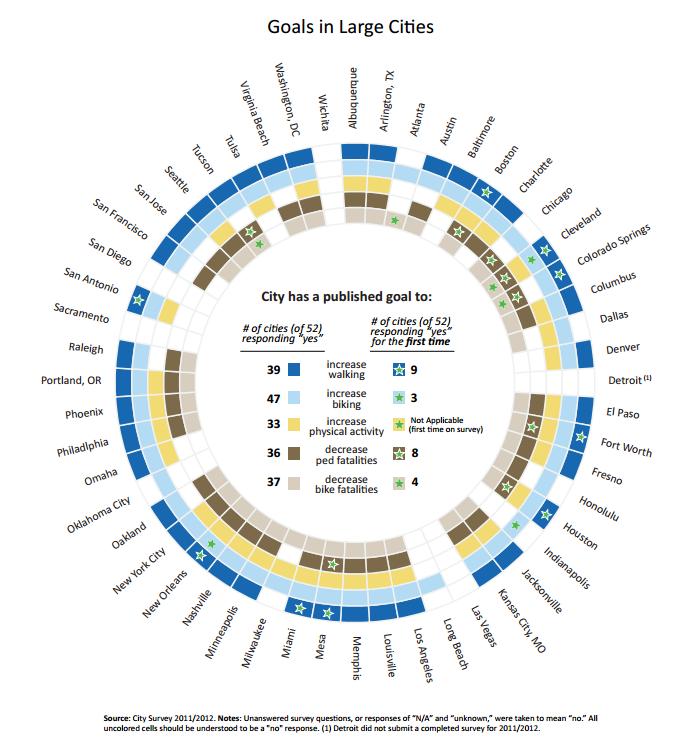San Diego declared a bike-friendly city by USA Today based on a bike path in Coronado

To be fair to USA Today’s glowing praise of our fair city, the title of this post is slightly misleading because USA Today also cited a handful of bike routes and the repeatedly delayed bike share program as a basis for declaring San Diego as a top bike-friendly city.
Well with such high praise we at BikeSD should probably be getting ready to close up our operations as meeting our mission, is now within spitting distance. If USA Today states we’re in the top 10 list of bike-friendly cities in the country, we must be really close to being the world’s best city for bicycling. But perhaps it would be useful to take a look at some real data at how woefully behind we are compared with nearly every single major city in the country and show how far off the mark the USA Today piece really was.
Earlier this year, the Alliance for Biking and Walking (a North American coalition of state and local bicycling and walking advocacy organizations) released their comprehensive Benchmarking Report. This report “analyzed uniform national data sources from public agencies and organizations, as well as state and local surveys, collected in 2011 and 2012. As data collection methods become standardized and more refined, the benchmark report is able to show how biking and walking impacts a whole host of factors previously too difficult to measure.”

I frankly was too embarrassed to even write about this report and about where we stood as a city because of how far behind we are. To be clear, we are slowly catching up to the top bike-friendly cities like Portland and Minneapolis and less bike-friendly cities like Los Angeles or hilly cities like Seattle and San Francisco. Between CicloSDias, implementation of painted buffered bike lanes, our first road diet, the adoption of the city’s and region’s Bike Plans, becoming a NACTO member city, attention and support from our entire city council and mayor – to name a few things, we are finally moving along. But we are by no means anywhere close to being a top 10 bike-friendly city.
One clear indicator of the bike-friendliness of a city is determined by the number of people riding a bicycle in that city to work. For all the talk about our year-round perfect weather with “a terrain that’s not too hilly or too flat”, only a pitiful 0.9% ride to work (now 1.1%). Granted the data doesn’t allow for the full capture of all other forms of riding, outside of commuting, but this metric demonstrates the complete unfeasibility of riding to work in San Diego which makes us as a city, ranked pretty far down the list.
Besides our ranking based on how many people ride to work, our riders aren’t actually safe on the streets either with our bicycle fatality rates being 6.8 per 10,000 bicycling commuters. And while we are counting riders on some streets, we do not have accurate measurable goals to move ahead, in order to actually provide a true transportation choice to San Diegans. Unlike most cities we do not have goals to increase our bicycling rates, increase physical activity, or decrease bicyclist fatalities and we have the dubious honor of sharing this lack of measurability with cities like Wichita, Detroit, Las Vegas and Sacramento.

I hope none of our elected officials, policy makers or movers and shakers read the USA Today piece and declared that as a city we were done. We will never be a top bike friendly city unless the number of people riding bicycles increase and we reduce the number of deaths that occur on our city streets. Our strategy has been to push for bike infrastructure that is going to enable that shift from driving to bicycling and bicycling safely while simultaneously reducing the number of fatalities on our streets. In other words, there is a lot of work still to be done.
As our board member Bruce Shank says “what we’ve accomplished so far and all the infrastructure being planned will get us to becoming a world class bicycle-friendly city. In reality we live in a city where bicycles and pedestrians are a mere afterthought with deadly results. We are no where near one of the best bike friendly cities, yet.”
